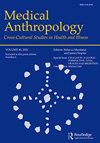稻草人:在柬埔寨对抗COVID-19的超自然哨兵。
IF 1.2
3区 社会学
Q2 ANTHROPOLOGY
引用次数: 0
摘要
对COVID-19威胁的反应揭示了各国传染的基本文化理论。在柬埔寨,竖起稻草人已成为一种流行的反应。这项关于传染病和文化死亡景观的民族志研究,包括对185名告密者的参与观察,揭示了人类对稻草人的感知不如对鬼魂的感知重要,这些稻草人旨在击退鬼魂。作为有效的哨兵,这些稻草人必须看起来具有威胁性并且装备精良。这些观察结果为在流行病或大流行的背景下传染、威胁和防御的文化建构提供了见解。本文章由计算机程序翻译,如有差异,请以英文原文为准。
Scarecrows: Supernatural Sentinels Against COVID-19 in Cambodia.
Responses to the threat of COVID-19 have unveiled the underlying cultural theories of contagion across various countries. In Cambodia, erecting scarecrows has emerged as a popular response. This ethnographic study on contagious diseases and cultural deathscapes, which included participant observation with 185 informants, revealed that the human perception of scarecrows was less significant than the perception of ghosts that these scarecrows were intended to repel. To serve as effective sentinels, these scarecrows must appear menacing and be well armed. These observations offer insights into the cultural construction of contagion, threat, and defense in the context of an epidemic or a pandemic.
求助全文
通过发布文献求助,成功后即可免费获取论文全文。
去求助
来源期刊

Medical Anthropology
Multiple-
CiteScore
4.10
自引率
4.30%
发文量
57
期刊介绍:
Medical Anthropology provides a global forum for scholarly articles on the social patterns of ill-health and disease transmission, and experiences of and knowledge about health, illness and wellbeing. These include the nature, organization and movement of peoples, technologies and treatments, and how inequalities pattern access to these. Articles published in the journal showcase the theoretical sophistication, methodological soundness and ethnographic richness of contemporary medical anthropology. Through the publication of empirical articles and editorials, we encourage our authors and readers to engage critically with the key debates of our time. Medical Anthropology invites manuscripts on a wide range of topics, reflecting the diversity and the expanding interests and concerns of researchers in the field.
 求助内容:
求助内容: 应助结果提醒方式:
应助结果提醒方式:


